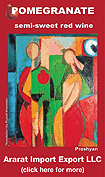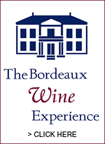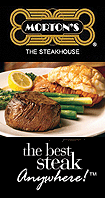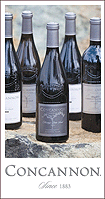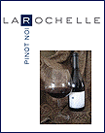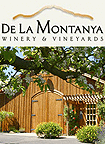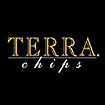
Kiwi
Cuvée: The Next Generation of French Wines
By
Jeffrey T. Iverson / Paris
Arrogant
Frog wine pokes fun at France's reputation for haughtiness in
wine-making and takes a page from the New World marketing playbook
to reach foreign consumers
Francois
Lenoir / Reuters
France
has earned a reputation for stubborn arrogance in the wine world
for boasting of its inimitable terroirs and millennia-old viticultural
traditions, while slapping lawsuits on any upstart foreign wine
maker who dares to label his tipple champagne or chablis.
So
when the news emerged this month that a Loire Valley producer
had been smacked down by an Australian tribunal for apparently
trying to pass off its sauvignon blanc as a New Zealand brand
by labeling it Kiwi Cuvée, critics were quick to revel
in the irony. Britain's Daily Telegraph newspaper called it
a "humiliating blow to Gallic pride," while the Wall
Street Journal said that France had gotten a "dose of its
own medicine." But the French may have been less guilty
of applying double standards than of using the same kind of
savvy marketing strategies that have allowed new wine-producing
countries like New Zealand to give France a run for its money
in recent years. (See
pictures of Paris expanding.)
Although
Kiwi Cuvée is sold legally in European supermarkets,
the tribunal ruled last October that the wine maker, Lacheteau,
could not market it under that name in Australia because consumers
would wrongly believe it was made in New Zealand. The ruling
was hailed by the New Zealand Winegrowers Association, which
had brought the complaint to the board. But the indignation
of the Kiwis has lessened in recent days after a New Zealand
blogger highlighted the apparently little-publicized fact that
the cuvée is actually made for Lacheteau by a New Zealand
wine maker, Rhyan Wardman. "Kiwi label is nothing to wine
about," the New Zealand Sunday Star-Times conceded last
week.
Despite
the twists and turns in the dispute, one thing is for certain:
a minirevolution is taking place in the French wine industry.
Some wine makers argue that the French have for too long clung
to a romanticized notion of terroir and a convoluted labeling
system, the appellation d'origine controlée (AOC), which
makes it difficult for consumers to figure out that a Domaine
des Comtes Lafon Volnay Santenots-du-Milieu Premiere Cru is
a Burgundy wine — let alone a pinot noir. "This is
myopic marketing," says Jean-Claude Mas, a wine maker in
the southern region of Languedoc. "And our arrogance caused
us to ignore how serious the competition from the New World
was." (See
how global warming could change the wine-making map.)
Global
sales of wines from the New World — North and South America,
South Africa and Oceania — jumped from 3% of the market
to 30% between 1990 and 2008, causing serious concern among
wine makers from France and other European countries. The French
are now realizing that they must swallow their pride and take
a page from the New World playbook in order to attract new,
young consumers with little wine-drinking experience. According
to Denis Verdier, president of the Confederation of French Wine
Cooperatives, this means introducing "easy-drinking"
products with labels clearly stating the type of wine instead
of the appellation, as well as a bit of gimmicky marketing.
"I think France was sleeping on the laurels of its past
success a bit," he says. "And now it's time for us
to wake up."
Some
French wine makers are already enjoying success under the new
system. The wine maker Chamarré, whose motto is "Made
in France, Enjoyed Everywhere," only produced its first
batch five years ago but today exports to some 30 countries.
It has done well by abandoning the notion of terroir —
it sources its grapes from thousands of growers across France
to produce single varietal and assemblage wines with straightforward,
stylish labels. Cleverly named Côtes du Rhone wines like
Le Freak Shiraz-Viognier and Rhôning Stones are also showing
up on supermarket shelves around the world, as are Languedoc
wines like Bois-Moi ("Drink Me"), Abracadabra Blanc
and Petit Bistro Syrah, which has a label depicting a romantic
Van Gogh-inspired café scene. (Read
"New Wine In Old Vessels.")
The
New World influence can also be seen in the "critter labels"
on other nouveau French wines, such as Thierry Boudinaud's Fat
Bastard Chardonnay, with its trademark hippo, and Domaine Font
Mars' Cabernet Sauvignon, whose labels feature dinosaurs, a
nod to the vineyard's fossil-rich soils. And the owner of the
Lacheteau vineyard, Les Grands Chais de France, whose wines
represent a fifth of the country's total exports, launched a
line in 2005 with labels showing cartoon farm animals to indicate
the types of meats that best complement the wines.
With
new industry reforms passed last summer in Brussels allowing
all European wine producers to list the grape variety and vintage
on their labels — the makers of low-end wines had previously
only been able to call their products table wine in many countries
— another wave of aggressively marketed French wine is
sure to come. "This is just beginning," says Verdier.
"Now that the new rules have come into effect, we are definitely
going to pull out all the stops."
While
purists fear a dumbing down of French wine may have adverse
consequences, Mas says the long-term success of the new brands
still depends on quality wine-making. "This Kiwi Cuvée
is a perfect expression of the sauvignon blanc grape, which
is made in the Loire [valley], but with a New World attitude,"
says Mas. That may have been reason enough for New Zealanders
to fear Lacheteau moving in on their territory — the best-selling
wine in Australia is currently New Zealand sauvignon blanc.
(See
pictures of New Zealand.)
Australia
may have to do without Kiwi Cuvée, but another French
wine with a New World name is being quaffed there with zeal:
Arrogant Frog, made by Mas at his estate, Domaine Paul Mas.
It has become Australia's biggest French import, with 1 million
bottles sold annually. Proof, perhaps, that sometimes it pays
to have a bad reputation.
See
reviews of 50 American wines.
Read
more:





